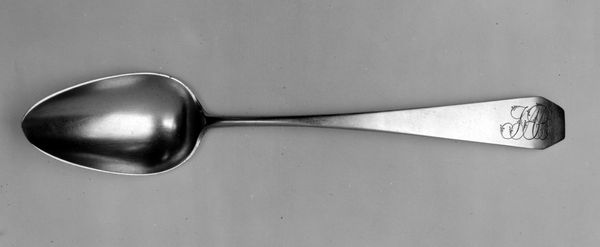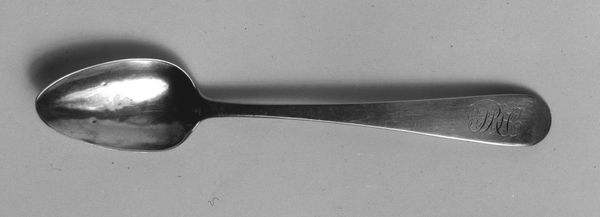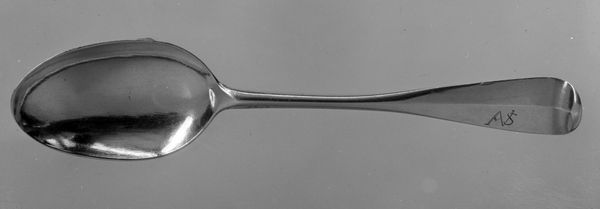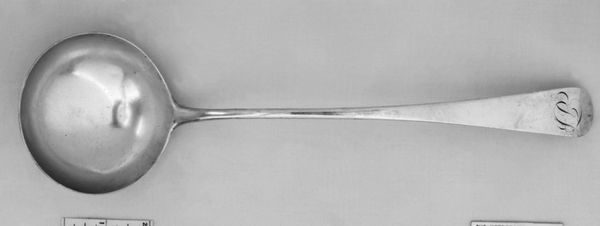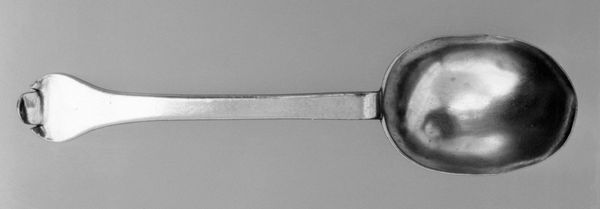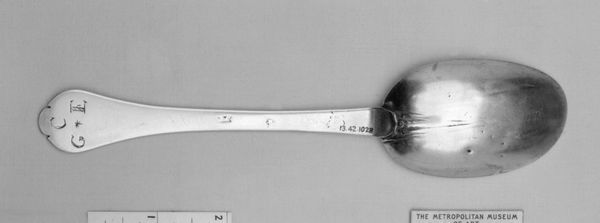
silver, metal, photography
#
silver
#
metal
#
photography
Dimensions: L. 8 3/4 in. (22.2 cm)
Copyright: Public Domain
Curator: Today, we’re looking at an object simply titled, “Spoon,” made sometime between 1770 and 1800. It's currently held at the Metropolitan Museum of Art. It is a humble object, really, made of silver. Editor: It is surprisingly elegant for such a mundane object, though. The light catches the silver in a way that makes it look almost luminous. It's so simple, but its sleekness evokes a sense of restrained wealth and privilege. Curator: That contrast is precisely what's so interesting. Silverware during this period wasn't just about eating; it was about displaying status. Owning silver signaled belonging to a certain class, highlighting social and economic divides. Editor: And that privilege comes with responsibility, doesn't it? Who made it? Who used it? Were those who ate with it conscious of the lives of those who produced it or went without? How does access and scarcity shape power dynamics? Curator: Those are difficult, but vital questions. Objects like this remind us that even in everyday items, social relations and structures of power are embedded. We have to acknowledge this complex interplay between use, value, and access when studying the art of any age. Editor: I agree, and looking at a simple spoon from this period invites us to reconsider what labor looks like in relationship to leisure. How do we move beyond simple art appreciation to create something useful? How might we work against legacies of inequity that still shape our access to basic needs, like food and nourishment, today? Curator: Indeed. The Spoon becomes more than just a utensil—it transforms into a symbol loaded with complex social and political weight, making us confront our own presumptions and connections to larger historical injustices. Editor: Well said. It is a surprisingly powerful object. Curator: Absolutely. An object like this urges us to engage with not just its form but its past, while prompting vital conversation on present social responsibilities.
Comments
No comments
Be the first to comment and join the conversation on the ultimate creative platform.

